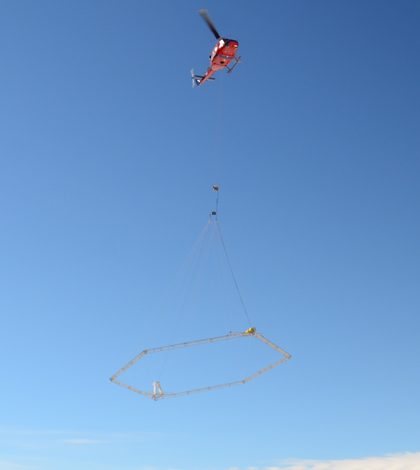Researchers Find Microbial Life In Antarctica’s Dry Valleys

Researchers are using airborne electromagnetic sensors to explore salty aquifers. (Credit: Lars Jansan / NSF)
A team of researchers in Antarctica’s Dry Valleys has been exploring salty aquifers deep below glaciers using an airborne electromagnetic sensor attached to a helicopter. Their most recent data was published in the journal Nature Communications with astounding evidence of microbial life surviving in the harsh conditions.
According to a release from the National Science Foundation, this discovery proves that if microbes can adapt to such extreme cold and dry ecosystems, they can survive almost anywhere. It may also provide new insights into similar life below the surface of Mars. The findings can also help determine the conditions of ancient climates and reveal how they’ve changed to influence what our planet is experiencing today.
Antarctica is still largely unexplored, especially near the coasts where the researchers have found that microbial weathering in aquifers may have had some impact on the development of biodiversity in the Southern Ocean over time, emphasizing the importance of continuing to study these areas.
Top image: Researchers are using airborne electromagnetic sensors to explore salty aquifers. (Credit: Lars Jansan / NSF)




0 comments